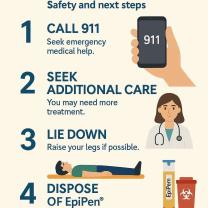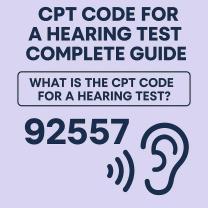What are the dangers of low oxygen?
Low oxygen levels in the body, known as hypoxemia, can lead to various health risks and complications. Oxygen is crucial for the proper functioning of tissues and organs, and when levels drop below normal, it can have serious consequences:
Short-Term Effects:
- Fatigue and Weakness: Low oxygen levels can cause feelings of tiredness, weakness, and lack of energy.
- Shortness of Breath: Difficulty breathing or shortness of breath, especially during physical activity or exertion.
- Confusion or Cognitive Impairment: Reduced oxygen to the brain can result in confusion, memory problems, difficulty concentrating, and impaired judgment.
Long-Term Effects and Complications:
- Organ Damage: Prolonged hypoxemia can damage vital organs such as the heart, brain, and kidneys, leading to serious health conditions.
- Cardiovascular Problems: Chronic low oxygen levels can strain the heart, leading to conditions like pulmonary hypertension, heart failure, or irregular heartbeats.
- Respiratory Issues: Chronic low oxygen can worsen existing respiratory conditions like chronic obstructive pulmonary disease (COPD) or lead to the development of conditions such as pulmonary fibrosis.
- Cyanosis: A bluish discoloration of the skin, especially around the lips and fingertips, can occur due to insufficient oxygen in the bloodstream.
Acute Complications:
- Hypoxia: Severe hypoxemia can lead to hypoxia, a condition where the body’s tissues and organs are deprived of adequate oxygen supply, potentially leading to cell damage or organ failure.
- Loss of Consciousness: Extremely low oxygen levels can cause loss of consciousness, seizures, or coma.
Worsening of Existing Conditions: Low oxygen levels can exacerbate symptoms in individuals with pre-existing health conditions such as asthma, emphysema, or sleep apnea.
It's crucial to address the underlying cause of low oxygen levels to prevent further complications. Conditions like lung diseases, heart problems, anemia, altitude sickness, or sleep disorders can contribute to hypoxemia. Treatment involves addressing the root cause and providing supplemental oxygen or other therapies as necessary.
If you or someone experiences symptoms of low oxygen levels, such as shortness of breath, confusion, or cyanosis, seek medical attention promptly as it can be a sign of a serious health issue.
What potential risks or health implications are associated with low oxygen levels in the body?
Low oxygen levels in the body, also known as hypoxemia, can have serious health implications if not addressed promptly. Oxygen is essential for various bodily functions, including cellular respiration, which generates energy for cells to function. When oxygen levels drop below a certain threshold, the body's ability to carry out these essential processes becomes impaired, leading to a range of potential health risks.
Short-term Effects of Low Oxygen Levels:
Headache: One of the earliest signs of low oxygen levels is often a headache. This occurs due to the buildup of carbon dioxide, a waste product of cellular respiration, in the bloodstream.
Dizziness or Lightheadedness: As oxygen levels decline, the brain may receive insufficient oxygen, causing dizziness or lightheadedness. This can be particularly dangerous in situations that require balance and coordination.
Rapid Breathing: The body compensates for low oxygen levels by increasing the rate and depth of breathing to try to take in more oxygen. This can lead to rapid breathing or hyperventilation.
Shortness of Breath: As oxygen levels continue to drop, individuals may experience shortness of breath, or dyspnea. This is due to the increased effort required to extract oxygen from the air.
Confusion or Impaired Judgment: With prolonged low oxygen levels, the brain may experience impaired function, leading to confusion, impaired judgment, and difficulty concentrating.
Cyanosis: In severe cases of hypoxemia, the skin may turn a bluish color, known as cyanosis, due to the reduced oxygen saturation of hemoglobin in the blood.
Long-term Effects of Low Oxygen Levels:
Chronic Obstructive Pulmonary Disease (COPD): Chronic exposure to low oxygen levels, often caused by smoking or lung diseases, can lead to COPD, a progressive condition that causes difficulty breathing.
Pulmonary Hypertension: Low oxygen levels can strain the heart, leading to pulmonary hypertension, a condition characterized by high blood pressure in the arteries of the lungs.
Heart Failure: Chronic hypoxemia can weaken the heart muscle, increasing the risk of heart failure, a condition where the heart is unable to pump blood effectively.
Cognitive Impairment: Prolonged low oxygen levels can damage brain cells, leading to cognitive decline, memory problems, and difficulty thinking.
Increased Risk of Infection: Low oxygen levels can weaken the immune system, making individuals more susceptible to infections.
Preventing Low Oxygen Levels:
Maintain a Healthy Lifestyle: Eating a balanced diet, exercising regularly, and avoiding smoking can help maintain overall health and reduce the risk of conditions that can contribute to hypoxemia.
Manage Underlying Conditions: If you have any underlying medical conditions that can affect oxygen levels, such as asthma, emphysema, or heart disease, work closely with your doctor to manage these conditions effectively.
Monitor Oxygen Levels: If you are at risk of hypoxemia, consider using a pulse oximeter to monitor your blood oxygen levels at home. This can help you detect early signs of low oxygen levels and seek medical attention promptly.
Seek Prompt Medical Attention: If you experience any symptoms of hypoxemia, such as shortness of breath, dizziness, or confusion, seek medical attention immediately. Early diagnosis and treatment can help prevent serious complications.












